Engelsk A
Ny ordning
kl. 09.00-14.00
Vejledning til opgavesættet
| Du skal besvare følgende opgaver: | |
|
|
| Tekster til Assignment 4A: | |
|
|
| Tekster til Assignment 4B: | |
|
Vejledning til opgaverne
Den samlede eksaminationstid for Assignment 1-4 er fem timer. Besvarelsen bedømmes som en helhed ud fra de faglige mål for niveauet. Der lægges vægt på beherskelsen af det engelske sprog, forståelse af forlægget og færdighed i skriftlig fremstilling på engelsk.
Det anbefales, at du skriver din besvarelse i skabelonen, som hentes ved klik på Template i menuen til venstre. Besvarelsen afleveres i ét dokument med opgaverne i rækkefølgen 1-4.
Sådan henviser du til tekst, video- og lydklip
Hvis du citerer, skal du angive kilde.
Alt anvendt materiale skal være engelsksproget og angives med kildehenvisninger.
Du kan henvise til dele af video- og lydklip, f.eks. ved at angive afspillerens minut- og sekundtal for henholdsvis starten og slutningen af klippet.
|
Tekster i opgavesættet
Teksternes ortografi og tegnsætning følger forlæggene. Trykfejl er dog rettet.
Opsætningen følger ikke nødvendigvis forlæggene. Dog følges forlægget nøje, hvor opsætningen på den ene eller anden måde indgår i opgaven.
Assignment 1
Hver af de nedenstående sætninger indeholder et modalverbum. Angiv modalverbet, og hvad det udtrykker, fx mulighed, sandsynlighed, nødvendighed, tilladelse, forpligtigelse, evne, hensigt eller ren fremtid.
Uddrag fra: “No death and an enhanced life: Is the future transhuman?”
|
| Sætning | Modalverbum | Fx mulighed, sandsynlighed, nødvendighed, tilladelse, forpligtigelse, evne, hensigt eller ren fremtid |
| 1. | ||
| 2. | ||
| 3. | ||
| 4. | ||
| 5. | ||
| 6. | ||
| 7. |
Assignment 2
Skriv en sammenhængende tekst på 100 til 150 ord om billedet.
I din tekst skal du anvende fire adjektiver, ét sætningsadverbium samt tre adverbier, der beskriver henholdsvis et verbum, et adjektiv og et andet adverbium. Understreg de anvendte fire adjektiver og fire adverbier.
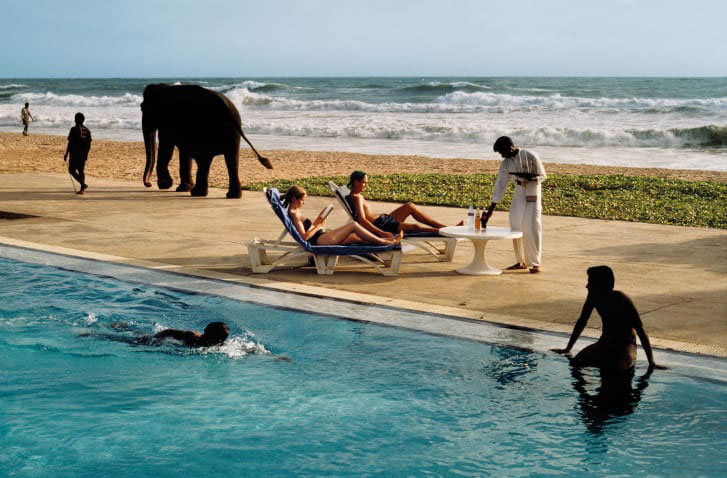 Fotograf: Steve McCurry
Fotograf: Steve McCurry
Assignment 3
Omskriv følgende fem sætninger fra aktiv til passiv:
Uddrag fra: “No death and an enhanced life: Is the future transhuman?”
|
| Din tekst: |
| 1. |
| 2. |
| 3. |
| 4. |
| 5. |
Assignment 4
Answer either assignment 4A or assignment 4B.
Write either assignment 4A-1 or 4A-2.
Transhumanism
Use the following sources:
- Hamlet, Prince of Denmark
- No death and an enhanced life: Is the future transhuman?
- Why ‘upgrading’ humanity is a transhumanist myth
- Transhumanism: advances in technology could already put evolution into hyperdrive – but should they?
- The augmented, customizable human body
Assignment 4A-1
Argumentative essay
Using all the texts from the given material, write an argumentative essay in which you account for and discuss transhumanism.
Give your essay an appropriate headline.
Word count: 800-1200 words
Your essay must include references to the source material.
All sources must be documented.
Assignment 4A-2
Manuscript for a speech
Using all the texts from the given material, write a manuscript for a speech in which you address issues relating to transhumanism.
Include in your speech the circumstances in which the speech is held.
Word count: 800-1200 words
Your manuscript must include references to the source material.
All sources must be documented.
Assignment 4B
Write an analytical essay in which you analyse the text “Occasional Address”, a graduation speech given by Tim Minchin at UWA, The University of Western Australia, in 2013.
Part of your essay must focus on argumentative and rhetorical devices.
Word count: 800-1200 words
Use the following source: In your essay, you must include references to the text.
All sources must be documented.
Hamlet, Act II Scene 2
Tilbage
|
What a piece of work is a man! how noble in reason!
how infinite in faculty! in form and moving how express and admirable! in action how like an angel! in apprehension how like a god! the beauty of the 5
world! the paragon of animals!
|
Tilbage
No death and an enhanced life: Is the future transhuman?Robin McKie, 6 May 2018 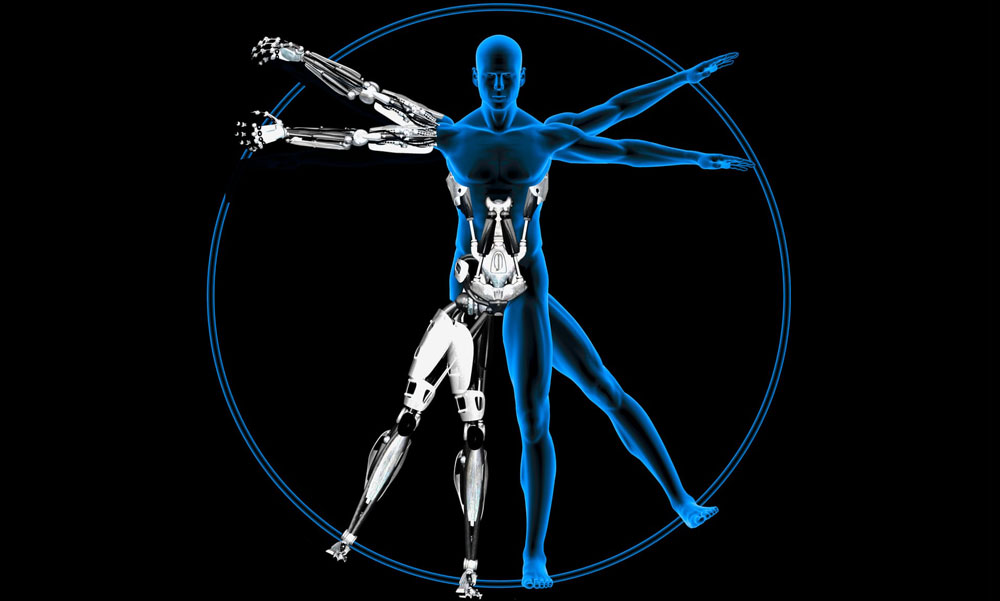
"Transhumanists believe that we should augment our bodies with new technology. Composite: Lynsey Irvine/Getty The 21st-century tech revolution is transforming human lives across the globe T
he aims of the transhumanist movement are summed up by Mark O’Connell in his
book To Be a Machine, which last week won the Wellcome Book prize. “It is their belief that we can and should eradicate ageing as a cause of death; that we can and should use technology to augment our bodies and our minds; that we can and should 5
merge with machines, remaking ourselves, finally, in the image of our own higher ideals.”
The idea of technologically enhancing our bodies is not new. But the extent to which transhumanists take the concept is. In the past, we made devices such as wooden legs, hearing aids, spectacles and false teeth. In future, we might use implants to augment our senses so we can detect infrared or ultraviolet radiation directly or boost our cognitive 10
processes by connecting ourselves to memory chips. Ultimately, by merging man and
machine, science will produce humans who have vastly increased intelligence, strength, and lifespans; a near embodiment of gods. Is that a desirable goal? Advocates of transhumanism believe there are spectacular rewards to be reaped from going beyond the natural barriers and limitations that constitute an ordinary 15
human being. But to do so would raise a host of ethical problems and dilemmas. As O’Connell’s
book indicates, the ambitions of transhumanism are now rising up our intellectual agenda. But this is a debate that is only just beginning. There is no doubt that human enhancement is becoming more and more sophisticated – as will be demonstrated at the exhibition The Future Starts Here which opens at the V&A museum 20
in London this week. Items on display will include “powered clothing” made by the US company
Seismic. Worn under regular clothes, these suits mimic the biomechanics of the human body and give users – typically older people – discrete strength when getting out of a chair or climbing stairs, or standing for long periods. In many cases these technological or medical advances are made to help the injured, sick or 25
elderly but are then adopted by the healthy or young to boost their lifestyle or performance.
The drug erythropoietin (EPO) increases red blood cell production in patients with severe anaemia but has also been taken up as an illicit performance booster by some athletes to improve their bloodstream’s ability to carry oxygen to their muscles. And that is just the start, say experts. “We are now approaching the time when, for some 30
kinds of track sports such as the 100-metre sprint, athletes who run on carbon-fibre blades
will be able to outperform those who run on natural legs,” says Blay Whitby, an artificial intelligence expert at Sussex University. The question is: when the technology reaches this level, will it be ethical to allow surgeons to replace someone’s limbs with carbon-fibre blades just so they can win gold medals? Whitby 35
is sure many athletes will seek such surgery. “However, if such an operation came before any
ethics committee that I was involved with, I would have none of it. It is a repulsive idea – to remove a healthy limb for transient gain.” 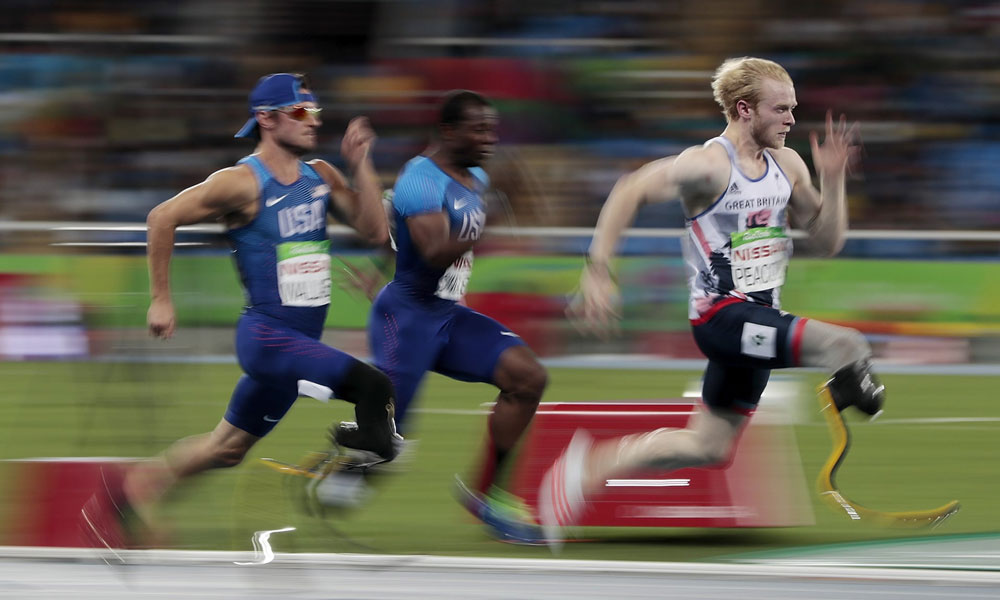
Scientists think there will come a point when athletes with carbon blades will be able to out-run able-bodied rivals. Photograph: Alexandre Loureiro/Getty Images Not everyone in the field agrees with this view, however. Cybernetics expert Kevin Warwick, of Coventry University, sees no problem in approving the removal of natural limbs and their 40
replacement with artificial blades. “What is wrong with replacing imperfect bits of your body
with artificial parts that will allow you to perform better – or which might allow you to live longer?” he says. Warwick is a cybernetics enthusiast who, over the years, has had several different electronic devices implanted into his body. “One allowed me to experience ultrasonic inputs. It gave me 45
a bat sense, as it were. I also interfaced my nervous system with my computer so that I could
control a robot hand and experience what it was touching. I did that when I was in New York, but the hand was in a lab in England.” Such interventions enhance the human condition, Warwick insists, and indicate the kind of future humans might have when technology augments performance and the senses. Some 50
might consider this unethical. But even doubters such as Whitby acknowledge the issues are
complex. “Is it ethical to take two girls under the age of five and train them to play tennis every day of their lives until they have the musculature and skeletons of world champions?” he asks. From this perspective the use of implants or drugs to achieve the same goal does not look so deplorable. 55
This last point is a particular issue for those concerned with the transhumanist movement.
They believe that modern technology ultimately offers humans the chance to live for aeons, unshackled – as they would be – from the frailties of the human body. Failing organs would be replaced by longer-lasting high-tech versions just as carbon-fibre blades could replace the flesh, blood and bone of natural limbs. Thus we would end humanity’s reliance on 60
“our frail version 1.0 human bodies into a far more durable and capable 2.0 counterpart,”
as one group has put it. However, the technology needed to achieve these goals relies on as yet unrealised developments in genetic engineering, nanotechnology and many other sciences and may take many decades to reach fruition. As a result, many advocates – such as the US inventor 65
and entrepreneur Ray Kurzweil, nanotechnology pioneer Eric Drexler and PayPal founder
and venture capitalist Peter Thiel have backed the idea of having their bodies stored in liquid nitrogen and cryogenically preserved until medical science has reached the stage when they can be revived and their resurrected bodies augmented and enhanced. (...) |
Tilbage
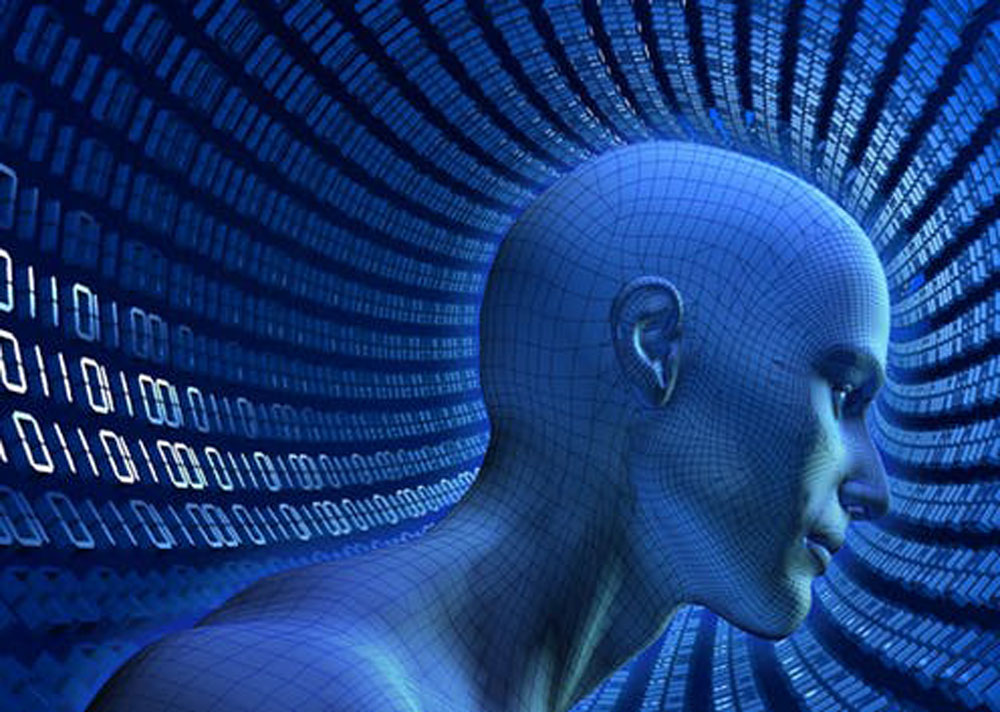
Tonis Pan/Shutterstock.com
Transhumanism: advances in technology could
March 29, 2018
|
Tilbage
OCCASIONAL ADDRESSby Tim Minchin 25th Sep 2013“In darker days, I did a corporate gig at a conference for this big company who made and sold accounting software. In a bid, I presume, to inspire their salespeople to greater heights, they’d forked out 12 grand for an Inspirational Speaker who was this extreme sports dude who had had a couple of his limbs frozen off when he got stuck on a ledge on some mountain. It was weird. 5
Software salespeople need to hear from someone who has had a long, successful and happy career
in software sales, not from an overly-optimistic, ex-mountaineer. Some poor guy who arrived in the morning hoping to learn about better sales technique ended up going home worried about the blood flow to his extremities. It’s not inspirational – it’s confusing. And if the mountain was meant to be a symbol of life’s challenges, and the loss of limbs a metaphor 10
for sacrifice, the software guy’s not going to get it, is he? Cos he didn’t do an arts degree, did he? He
should have. Arts degrees are awesome. And they help you find meaning where there is none. And let me assure you, there is none. Don’t go looking for it. Searching for meaning is like searching for a rhyme scheme in a cookbook: you won’t find it and you’ll bugger up your soufflé. Point being, I’m not an inspirational speaker. I’ve never lost a limb on a mountainside, metaphorically 15
or otherwise. And I’m certainly not here to give career advice, cos… well I’ve never really had what
most would call a proper job. However, I have had large groups of people listening to what I say for quite a few years now, and it’s given me an inflated sense of self-importance. So I will now – at the ripe old age of 38 – bestow upon you nine life lessons. To echo, of course, the 9 lessons and carols of the traditional Christmas service. 20
Which are also a bit obscure.
You might find some of this stuff inspiring, you will find some of it boring, and you will definitely forget all of it within a week. And be warned, there will be lots of hokey similes, and obscure aphorisms which start well but end up not making sense. So listen up, or you’ll get lost, like a blind man clapping in a pharmacy trying to echo-locate the 25
contact lens fluid.
Here we go: 1. You Don’t Have To Have A Dream. Americans on talent shows always talk about their dreams. Fine, if you have something that you’ve always dreamed of, like, in your heart, go for it! After all, it’s something to do with your time… 30
chasing a dream. And if it’s a big enough one, it’ll take you most of your life to achieve, so by the time
you get to it and are staring into the abyss of the meaninglessness of your achievement, you’ll be almost dead so it won’t matter. I never really had one of these big dreams. And so I advocate passionate dedication to the pursuit of short-term goals. Be micro-ambitious. Put your head down and work with pride on whatever is in 35
front of you… you never know where you might end up. Just be aware that the next worthy pursuit
will probably appear in your periphery. Which is why you should be careful of long-term dreams. If you focus too far in front of you, you won’t see the shiny thing out the corner of your eye. Right? Good. Advice. Metaphor. Look at me go. 2. Don’t Seek Happiness 40
Happiness is like an orgasm: if you think about it too much, it goes away. Keep busy and aim to
make someone else happy, and you might find you get some as a side effect. We didn’t evolve to be constantly content. Contented Australophithecus Afarensis* got eaten before passing on their genes. 3. Remember, It’s All Luck You are lucky to be here. You were incalculably lucky to be born, and incredibly lucky to be brought 45
up by a nice family that helped you get educated and encouraged you to go to Uni. Or if you were
born into a horrible family, that’s unlucky and you have my sympathy… but you were still lucky: lucky that you happened to be made of the sort of DNA that made the sort of brain which – when placed in a horrible childhood environment – would make decisions that meant you ended up, eventually, graduating Uni. Well done you, for dragging yourself up by the shoelaces, but you were 50
lucky. You didn’t create the bit of you that dragged you up. They’re not even your shoelaces.
I suppose I worked hard to achieve whatever dubious achievements I’ve achieved … but I didn’t make the bit of me that works hard, any more than I made the bit of me that ate too many burgers instead of going to lectures while I was here at UWA. Understanding that you can’t truly take credit for your successes, nor truly blame others for their 55
failures will humble you and make you more compassionate.
Empathy is intuitive, but is also something you can work on, intellectually. 4. Exercise I’m sorry, you pasty, pale, smoking philosophy grads, arching your eyebrows into a Cartesian curve as you watch the Human Movement mob winding their way through the miniature traffic cones of 60
their existence: you are wrong and they are right. Well, you’re half right – you think, therefore you
are… but also: you jog, therefore you sleep well, therefore you’re not overwhelmed by existential angst. You can’t be Kant, and you don’t want to be. Play a sport, do yoga, pump iron, run… whatever… but take care of your body. You’re going to need it. Most of you mob are going to live to nearly a hundred, and even the poorest of you will achieve 65
a level of wealth that most humans throughout history could not have dreamed of. And this long,
luxurious life ahead of you is going to make you depressed! But don’t despair! There is an inverse correlation between depression and exercise. Do it. Run, my beautiful intellectuals, run. And don’t smoke. Natch. 5. Be Hard On Your Opinions 70
A famous bon mot asserts that opinions are like arse-holes, in that everyone has one. There is great
wisdom in this… but I would add that opinions differ significantly from arse-holes, in that yours should be constantly and thoroughly examined. We must think critically, and not just about the ideas of others. Be hard on your beliefs. Take them out onto the verandah and beat them with a cricket bat. 75
Be intellectually rigorous. Identify your biases, your prejudices, your privilege.
Most of society’s arguments are kept alive by a failure to acknowledge nuance. We tend to generate false dichotomies, then try to argue one point using two entirely different sets of assumptions, like two tennis players trying to win a match by hitting beautifully executed shots from either end of separate tennis courts. 80
By the way, while I have science and arts grads in front of me: please don’t make the mistake of
thinking the arts and sciences are at odds with one another. That is a recent, stupid, and damaging idea. You don’t have to be unscientific to make beautiful art, to write beautiful things. If you need proof: Twain, Adams, Vonnegut, McEwen, Sagan, Shakespeare, Dickens. For a start. You don’t need to be superstitious to be a poet. You don’t need to hate GM technology to care about 85
the beauty of the planet. You don’t have to claim a soul to promote compassion.
Science is not a body of knowledge nor a system of belief; it is just a term which describes humankind’s incremental acquisition of understanding through observation. Science is awesome. The arts and sciences need to work together to improve how knowledge is communicated. The idea that many Australians – including our new PM and my distant cousin Nick – believe that the science 90
of anthropogenic global warming is controversial, is a powerful indicator of the extent of our failure
to communicate. The fact that 30% of this room just bristled is further evidence still. The fact that that bristling is more to do with politics than science is even more despairing. 6. Be a teacher. Please? Please be a teacher. Teachers are the most admirable and important people in the world. You 95
don’t have to do it forever, but if you’re in doubt about what to do, be an amazing teacher. Just for
your twenties. Be a primary school teacher. Especially if you’re a bloke – we need male primary school teachers. Even if you’re not a Teacher, be a teacher. Share your ideas. Don’t take for granted your education. Rejoice in what you learn, and spray it. 7. Define Yourself By What You Love 100
I’ve found myself doing this thing a bit recently, where, if someone asks me what sort of music I like, I
say “well I don’t listen to the radio because pop lyrics annoy me”. Or if someone asks me what food I like, I say “I think truffle oil is overused and slightly obnoxious”. And I see it all the time online, people whose idea of being part of a subculture is to hate Coldplay or football or feminists or the Liberal Party. We have tendency to define ourselves in opposition to stuff; as a comedian, I make a living out 105
of it. But try to also express your passion for things you love. Be demonstrative and generous in your
praise of those you admire. Send thank-you cards and give standing ovations. Be pro-stuff, not just anti-stuff. 8. Respect People With Less Power Than You. I have, in the past, made important decisions about people I work with – agents and producers – 110
based largely on how they treat wait staff in restaurants. I don’t care if you’re the most powerful cat
in the room, I will judge you on how you treat the least powerful. So there. 9. Don’t Rush. You don’t need to already know what you’re going to do with the rest of your life. I’m not saying sit around smoking cones all day, but also, don’t panic. Most people I know who were sure of their career 115
path at 20 are having midlife crises now.
I said at the beginning of this ramble that life is meaningless. It was not a flippant assertion. I think it’s absurd: the idea of seeking “meaning” in the set of circumstances that happens to exist after 13.8 billion years worth of unguided events. Leave it to humans to think the universe has a purpose for them. However, I am no nihilist. I am not even a cynic. I am, actually, rather romantic. And here’s my 120
idea of romance:
You will soon be dead. Life will sometimes seem long and tough and, god, it’s tiring. And you will sometimes be happy and sometimes sad. And then you’ll be old. And then you’ll be dead. There is only one sensible thing to do with this empty existence, and that is: fill it. Not fillet. Fill. It. And in my opinion (until I change it), life is best filled by learning as much as you can about as much 125
as you can, taking pride in whatever you’re doing, having compassion, sharing ideas, running(!),
being enthusiastic. And then there’s love, and travel, and wine, and sex, and art, and kids, and giving, and mountain climbing … but you know all that stuff already. It’s an incredibly exciting thing, this one, meaningless life of yours. Good luck. Thank you for indulging me.” 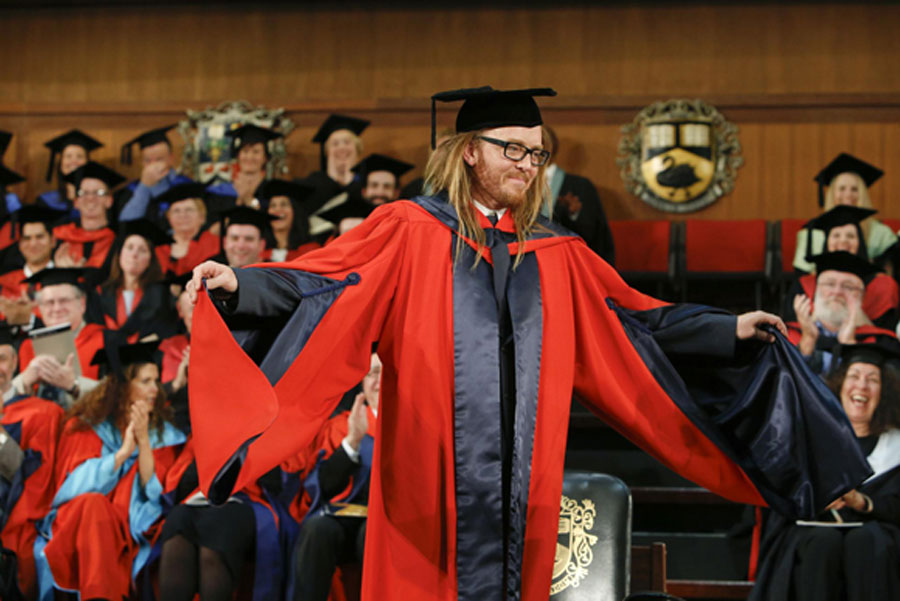
Photo courtesy of UWA (photographer – Ron D’Raine) Line 42: Australophithecus Afarensis – an extinct early human species that lived 3.9 to 2.8 million years ago in Africa. (http://humanorigins.si.edu/evidence/human-fossils/species/australopithecus-afarensis) |
Tilbage
Sources
William Shakespeare, Hamlet, Act II, Scene 2, a play, ca. 1599, Shakespeare-Online.com website. Viewed 18-12-2019.
http://www.shakespeare-online.com/quickquotes/quickquotepiecework.html
Robin McKie, “No death and an enhanced life: Is the future transhuman?”, an article, The Guardian website, 06-05-2018. Viewed 18-12-2019.
https://www.theguardian.com/technology/2018/may/06/no-death-and-an-enhanced-life-is-the-future-transhuman
Douglas Rushkoff, “Why ‘upgrading’ humanity is a transhumanist myth”, a video, Big Think website, 18-01-2019. Viewed 18-12-2019.
https://bigthink.com/videos/douglas-rushkoff-critiques-transhumanism
David Trippett, “Transhumanism: advances in technology could already put evolution into hyperdrive – but should they?”, an article, The Conversation website, 29-03-2018. Viewed 18-12-2019.
https://theconversation.com/transhumanism-advances-in-technology-could-already-put-evolution-into-hyperdrive-but-should-they-92694
“The augmented, customizable human body”, an illustration, The Kernel website, 26-04-2015. Viewed 18-12-2019.
https://kernelmag.dailydot.com/wp-content/uploads/2015/04/Issue37_VitruvianInfographic_1800px-1.jpg
Tim Minchin, “Occasional Address”, a speech, Tim Minchin.com website, 25-09-2013. Viewed 17-12-2019.
https://www.timminchin.com/2013/09/25/occasional-address/
Photo by Steve McCurry, CNN website, 08-11-2019. Viewed 17-12-2019.
https://edition.cnn.com/style/article/steve-mccurry-animal-photography/index.html

